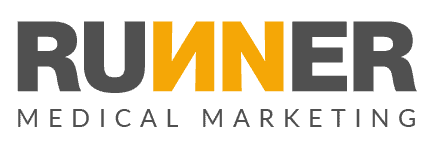
There’s a big difference between a medical practice that’s marketing itself to keep the schedule reliably booked and a medical practice that’s looking to truly grow — add physicians, add offices or drastically increase revenue. Meeting these strategic objectives often requires more than having a great website, doing a little SEO and using PPC ads. Rather, it may require an investment in advertising and services and a commitment to rethinking your approach to internal operations.
We’ve created a high-velocity patient acquisition program for practices that want to grow. I want to share with you four key pillars of this approach that when utilized together can help any medical practice scale quickly.
1. Use Hyper-Targeted Advertising And Messaging
Advertising is often the key to increasing leads, but it has to be targeted toward those who are most likely to convert. This is particularly challenging in medical practice marketing as you’re often not allowed to use third-party data or remarket to site visitors. Through the right combination of advertising platforms and targeting, however, it’s possible to reach your audience. We often suggest supporting Google search ads with a Facebook remarketing campaign, since Facebook (unlike Google) allows medical practices to remarket to website visitors.
When you do find the right people to market to, if your messaging isn’t relevant and motivating, you likely won’t entice them to convert. Personalizing your messaging requires taking the time to set up your campaign appropriately and carefully crafting the right message — there are no shortcuts. Yet research shows that many marketers simply don’t take the extra time and effort.
It’s not difficult. Start by asking yourself whether you’re using the same messaging across channels. If you are, one easy way to begin to personalize your campaigns is to align your messaging with the channel. For example, in a remarketing campaign where you’re advertising to those who’ve already been to your website, make the message more direct — ask for that appointment.
2. Build A Content Creation Engine
It can be difficult for medical practices to see the value in producing content like blog posts and white papers, but for medical practices, content is essential for both attracting and converting leads. Yes, good content boosts traffic from search engines, but it’s essential in other ways.
Content often makes the best advertising. We’ve found, for example, that ads that send people to a good piece of content (e.g., a blog post) often garner far higher click-through rates than standard ad copy that tries to push someone to take an action.
Content is also a great way to target the right audience when you’re limited on the data you can use to identify prospects. Publish a piece of content that’s tailored specifically to your target audience, and you can have confidence that those who engage with that content are the right people.
Lastly, content helps convert prospects into leads. The medical practices that provide content to make their prospects more informed are moving them closer to becoming a patient.
The secret to building a content creation engine is consistency. Commit to a publishing cadence, and stick with it. Start out with monthly posts, then work your way up to every two weeks and weekly content creation.
3. Create A Patient Advocacy Team
This is where many medical practices drop the ball. If you’re increasing your traffic and leads, you have to be able to close those leads. This may not be something that your current front office staff is equipped to do. Converting a lead into a patient isn’t the same as scheduling an appointment. It involves building empathy with the patient, being knowledgeable about their questions and knowing how to turn that conversation into a commitment. A medical practice looking to scale may need to not only grow the number of people answering phones and following up on emails but also the skill set of that team.
Building your patient advocacy team starts with an honest look at the volume of leads you’re currently fielding. Do you have many missed calls or long hold times? Are all of your leads getting calls back? How quickly are you calling back? What does your conversion rate from lead to patient look like? If your answers to these questions aren’t great, then you likely need to hire dedicated resources or work with a partner to ensure you’re not missing these opportunities.
Once you have resources in place, training staff in empathy is the key to generating high lead-to-patient conversion rates. As I wrote in a previous article on the power of empathy in medical marketing, practices that embrace empathy can create enduring patient relationships and differentiate their practices. For many practices, just investing in this one area can dramatically increase the number of leads they’re closing.
4. Establish A Measurement Plan
Increasing patient acquisition usually requires an investment, and without a clear plan for how to measure the results and return, it’s difficult to justify the effort. There are a few key steps we recommend to set up a foolproof measurement plan. First, implement the technology needed to track your results and make sure it’s set up correctly — setting up goals in Google Analytics, conversion tracking for your ad campaigns and call tracking are key. Next, define key performance indicators. We recommend keeping it simple: Focus on traffic, leads and patients. Lastly, set up a regular cadence for reporting and make the time to talk about results every month.
Growing your practice and increasing your patient acquisition through these four critical strategies sounds simple, but each of these can be a time-consuming initiative. If you want to become a high-growth medical practice, commit to these efforts in the long-term. Too often we see practices sacrifice the overall effectiveness of their marketing by neglecting one of these key initiatives. To become a high-growth practice, address them all.
This article originally appeared in Forbes.




